Disclosure: This article contains affiliate links. We may earn a commission from purchases at no extra cost to you, which helps our travel content.
As I stood on the uneven cobblestones of Alfama, watching an elderly Portuguese woman hang laundry from her window while singing fado melodies under her breath, I realized something profound: Lisbon doesn't need your money to steal your heart. The city's magic isn't locked behind expensive attractions or fancy restaurants—it's woven into the very fabric of its sun-drenched streets, time-worn azulejos (those gorgeous blue tiles), and the melancholic beauty that permeates every viewpoint. Coming from a background where I've hunted for authentic craft experiences across Southeast Asia, I was surprised to find that Portugal's capital offered a similar depth of tradition and soul without demanding a hefty wallet. Whether you're a student on break, a digital nomad between gigs (like yours truly when not answering customer service calls), or just someone who prefers to stretch their euros, I'm about to show you how Lisbon can be experienced—truly experienced—for under €45 ($50) per day. And trust me, as someone who's mastered the art of budget travel while still uncovering the cultural soul of a destination, this guide won't have you missing out on anything that matters.
Finding Affordable Accommodation in Lisbon's Heart
Let me start with the biggest budget-buster of any trip: accommodation. In Lisbon, I've cracked the code to staying central without breaking the bank.
My first recommendation? Hostels. But not just any hostels. Lisbon has elevated the hostel game to an art form. During my week-long stay, I bunked at Home Lisbon Hostel in Baixa for €18/night, which included—get this—homemade dinners prepared by the owner's mother (affectionately known as 'Mama'). There's something profoundly comforting about returning from a day of exploration to the smell of authentic Portuguese cooking and the sound of travelers exchanging stories.
For those who prefer more privacy, Pension Residencial Florescente offers simple but clean private rooms starting at €35/night. It's tucked away on a side street near Rossio Square—central enough that you can walk almost everywhere.
My personal hack? I used Booking.com with their 'pay at property' option, which allowed me to book without immediate payment. This flexibility meant I could reserve multiple options and then make my final decision closer to arrival date based on reviews or better deals that might emerge.
Another approach is to look slightly outside the tourist centers. Areas like Anjos and Intendente are just a 20-minute walk from downtown but offer significantly cheaper accommodations. During my last two days, I stayed in an Airbnb studio in Anjos for €30/night and discovered a neighborhood full of street art, tiny coffee shops, and a more authentic slice of Lisbon life.
One evening, I befriended a local weaver named Mariana who told me that many Portuguese families still rent out rooms in their homes—often without listing on major platforms. She directed me to a Facebook group called 'Rooms for Rent in Lisbon' where locals post short-term stays at fractions of tourist prices. While I didn't use this option myself, several travelers I met swore by this method for longer stays.
Remember that Lisbon is built on seven hills, so that 'great deal' might mean climbing 200 steps to reach your bed each night. Trust me, after the third day of scaling what felt like a vertical marathon to reach my budget Airbnb in Graça, I was questioning my life choices—but the panoramic views from my tiny balcony made it worthwhile.
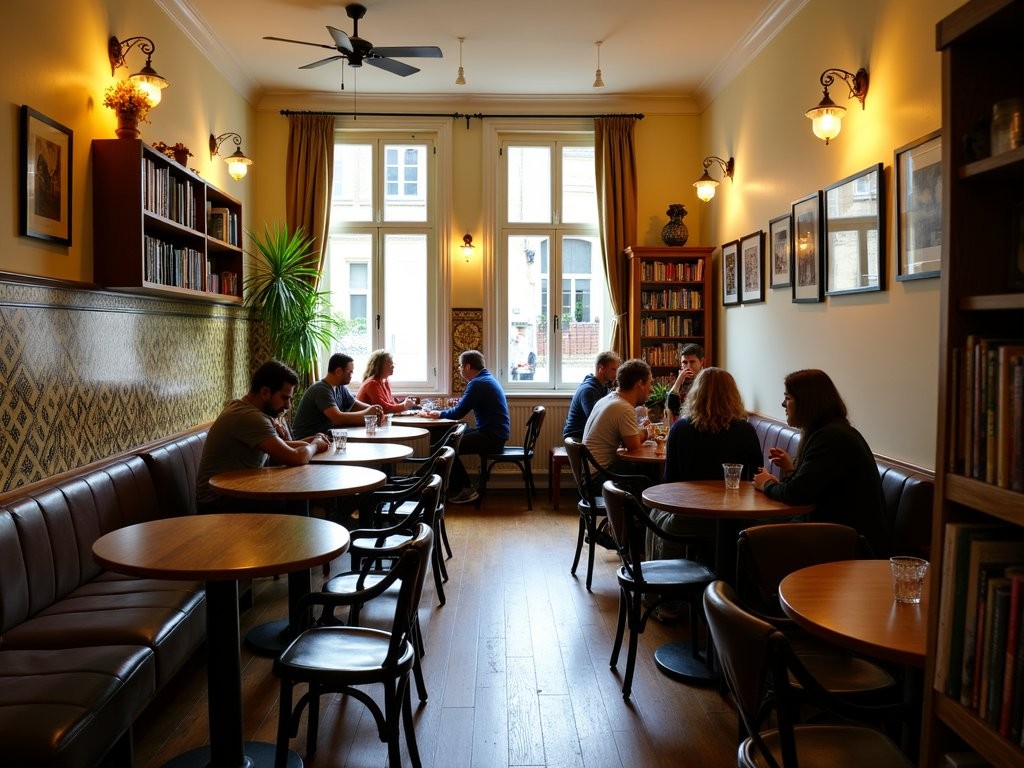
💡 Pro Tips
- Book accommodations with communal kitchens to save on meal costs
- Consider staying in Anjos or Intendente neighborhoods for better rates while remaining close to attractions
- Look for accommodations that include breakfast to start your day with one free meal
Eating Like a Local (Without Paying Tourist Prices)
If there's one thing I've learned from my travels, it's that food reveals the soul of a culture. In Lisbon, that soul is generous, flavorful, and—if you know where to look—surprisingly affordable.
Let me introduce you to my savior: tascas. These small, family-run eateries serve up hearty Portuguese classics at prices that seem transported from another decade. My favorite became Tasca da Esquina in Campo de Ourique, where I devoured a prato do dia (dish of the day) including soup, main course, a glass of house wine, and coffee for just €8.50. The owner, António, eventually recognized me on my third visit and started slipping extra petiscos (Portuguese tapas) onto my table with a conspiratorial wink.
Markets are another budget goldmine. Mercado da Ribeira (Time Out Market) is famous but pricey. Instead, head to Mercado de Campo de Ourique or Mercado de Arroios where locals shop. At Arroios, I discovered a small stall run by an elderly couple who sold homemade croquetes for €1 each—crispy on the outside, creamy on the inside, and utterly addictive.
For breakfast, skip the hotel offerings and do as the Lisboetas do: stand at the counter of a local pastelaria for a galão (coffee with milk) and a pastel de nata (custard tart) for around €2 total. Pastelaria Aloma in Campo de Ourique makes award-winning pastéis de nata that will haunt your dreams long after you've returned home.
Lunchtime is when you should pounce on the menu do dia offerings—three-course meals with wine for €8-12. O Trigueirinho near Praça das Flores became my midday ritual, where €10 bought me enough food to skip dinner entirely.
Speaking of dinner, if you're really pinching pennies, grab supplies from Pingo Doce or Mini Preço supermarkets and have a picnic at Miradouro de Santa Catarina while watching the sunset over the Tagus River. I packed my trusty pocket knife which proved invaluable for impromptu picnics of cheese, chouriço, and fresh bread.
Don't miss the tiny ginjinha bars scattered throughout the city. These hole-in-the-wall establishments serve shots of sour cherry liqueur for €1-1.50. A Ginjinha near Rossio Square has been serving this sweet concoction since 1840. The elderly gentleman who poured my ginjinha told me, "Drink with the cherry for sweet memories, without for bitter ones." I always chose the cherry.
One evening, following the recommendation of a local artisan I'd met while documenting traditional Portuguese embroidery, I discovered a tiny restaurant down an unmarked alley in Mouraria. There was no menu—just an older woman who asked if I was hungry and then proceeded to bring out the most incredible bacalhau (salt cod) I've ever tasted. The bill? €7.50, including a glass of vinho verde. Sometimes the best meals are found where tourists fear to tread.
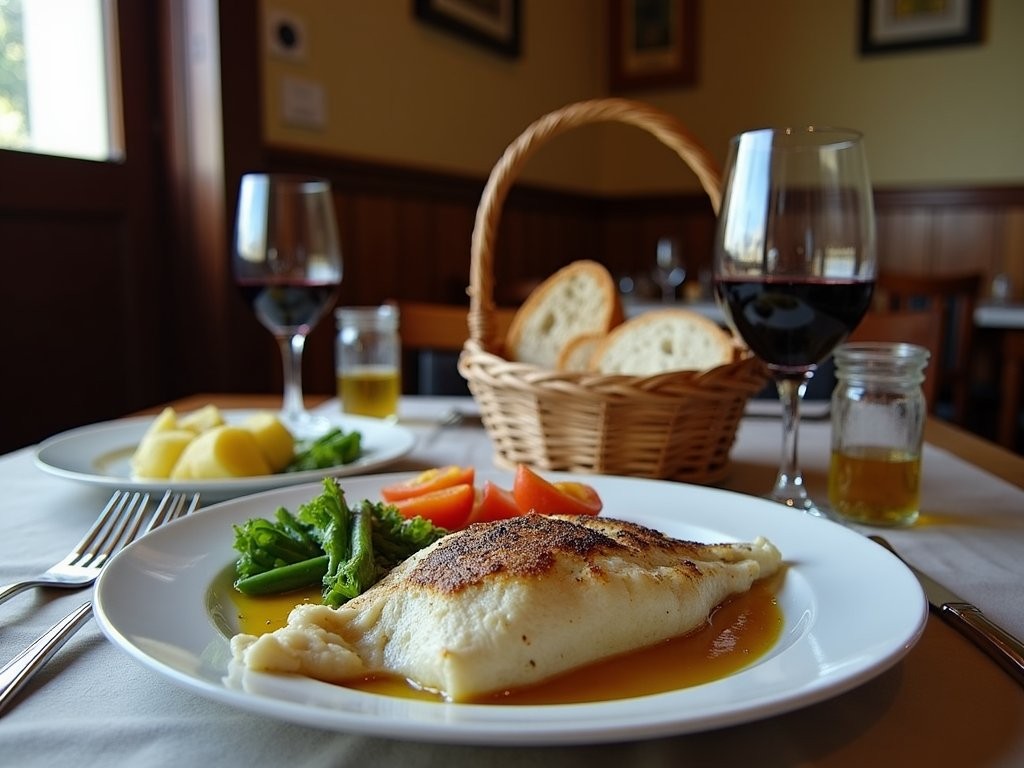
💡 Pro Tips
- Look for restaurants advertising 'prato do dia' (dish of the day) for the best value meals
- Eat your main meal at lunch when menu prices are significantly cheaper than dinner
- Shop at neighborhood mercados (markets) rather than supermarkets for fresh, affordable produce
Free and Nearly-Free Cultural Experiences
Lisbon is a city where some of the most profound experiences cost absolutely nothing. This is where budget travelers truly win.
First, let's talk about those famous hills and the rewards they offer: miradouros (viewpoints). My personal favorite is Miradouro da Senhora do Monte—less crowded than the famous Santa Luzia but offering an even more spectacular panorama. I spent an entire afternoon there sketching the cityscape and chatting with an old Portuguese man who shared stories of Lisbon before the tourism boom. Total cost: zero euros (though I did buy us both an ice cream cone).
Many of Lisbon's museums offer free entry on specific days. The Museu Nacional do Azulejo (National Tile Museum) is free on Sundays until 2 PM, offering a mesmerizing glimpse into Portugal's iconic ceramic art. As someone obsessed with traditional crafts, I spent hours photographing the intricate tile panels and watching demonstrations of tile-making techniques that haven't changed in centuries.
For music lovers, free fado performances can be found if you know where to look. While the famous fado houses in Alfama charge €15-20 for a show (plus mandatory dinner), I discovered authentic performances at Tasca do Jaime in Graça where locals spontaneously break into soulful fado songs on Tuesday and Saturday evenings. The only expectation is that you'll purchase a modest €2 glass of wine—a small price for an unforgettable cultural immersion.
Exploring Lisbon's distinct neighborhoods costs nothing but shoe leather. I spent an entire day wandering through Alfama's labyrinthine streets, discovering tiny workshops where artisans still practice traditional crafts. In one narrow alley, I stumbled upon an elderly woman hand-embroidering intricate designs on linens. Despite our language barrier, she invited me in to watch her work, demonstrating techniques passed down through generations. These spontaneous cultural exchanges are the true wealth of travel.
The city also offers excellent free walking tours. I joined one led by a history student named Miguel who brought Lisbon's complex past to life during a three-hour walk through downtown. While technically free, a tip of €5-10 is expected—still a bargain for the depth of information provided.
For literary enthusiasts, Livraria Bertrand in Chiado holds the Guinness record for the world's oldest operating bookstore. You can browse for hours without spending a cent, though I couldn't resist purchasing a small volume of Fernando Pessoa's poetry (€8) as a meaningful souvenir.
Perhaps my most memorable free experience was discovering a community craft workshop in Mouraria where local artisans teach traditional Portuguese handicrafts. I spent an afternoon learning basic weaving techniques from a master weaver named João, who reminded me so much of the Vietnamese artisans I'd apprenticed with during my college years. The workshop operates on a donation basis—I contributed €5, but the knowledge and connection were priceless.
To capture these experiences, I relied on my travel journal and a decent smartphone camera rather than expensive equipment. Sometimes the simplest tools yield the most authentic documentation.

💡 Pro Tips
- Research which museums offer free entry days and plan your schedule around them
- Join free walking tours at the beginning of your trip to get oriented and gather recommendations from local guides
- Visit churches outside of service hours for free access to incredible art and architecture
Navigating Lisbon: Transportation Hacks
Lisbon's compact historic center makes it wonderfully walkable, but those seven hills can test even the most enthusiastic pedestrian. Here's how I navigated the city without blowing my budget.
First, invest in a Viva Viagem card (€0.50 for the reusable card itself). This rechargeable transit card works on all public transportation and offers significant savings. The real deal, though, is loading it with a 24-hour unlimited pass for €6.60, which covers all metro, bus, tram, and funicular rides. I calculated that if you take more than three rides in a day, this pass pays for itself.
The iconic yellow Tram 28 offers a tour through Lisbon's most scenic neighborhoods for the price of a regular tram ticket (€3 if purchased onboard, or covered by your day pass). Tourist tram tours charge €20+ for similar routes. The catch? Tram 28 gets incredibly crowded. My solution was to board at Martim Moniz around 8:30 AM—early enough to beat most tourists but late enough that locals had already headed to work.
For a truly budget experience, discover the public elevators and funiculars that help locals navigate the steep hills. The Elevador de Santa Justa charges tourists €5.30 to use it as an attraction, but if you access it from the upper entrance at Largo do Carmo (requiring a bit of uphill walking), it's treated as public transportation and covered by your Viva Viagem card. The view from the top is identical either way.
When exploring farther-flung areas like Belém (home to the famous custard tarts and Jerónimos Monastery), use bus #728 rather than the tourist-packed tram. It follows nearly the same route for a fraction of the crowds.
Don't overlook walking as your primary mode of transportation. I discovered some of my favorite spots—a hidden miradouro, a tiny craft workshop specializing in handmade leather goods, an unmarked door leading to a secret garden—simply by wandering between destinations rather than taking direct transportation routes.
For longer explorations, I highly recommend bringing comfortable walking shoes and a collapsible water bottle to stay hydrated while tackling those hills. Lisbon has excellent drinking water and numerous public fountains where you can refill for free.
If you're staying longer than a few days, consider the weekly pass option (€15.80) for the Viva Viagem card. During my week-long stay, this saved me nearly €20 compared to daily passes.
One afternoon, I discovered the ultimate transportation hack: Lisbon's public elevators that aren't on tourist maps. The Elevador do Lavra saved me a grueling uphill climb to my hostel, and because it's part of the public transportation system, it was covered by my day pass. A local grandmother I shared the ride with chuckled at my excitement and told me in broken English that she'd been using it daily for 40 years.
Finally, if you're planning day trips to Sintra or Cascais (both highly recommended), go on weekdays if possible. The round-trip train fare is covered by a special €10 day pass that includes unlimited transportation in those towns as well—an incredible value that jumps to €15 on weekends and holidays.
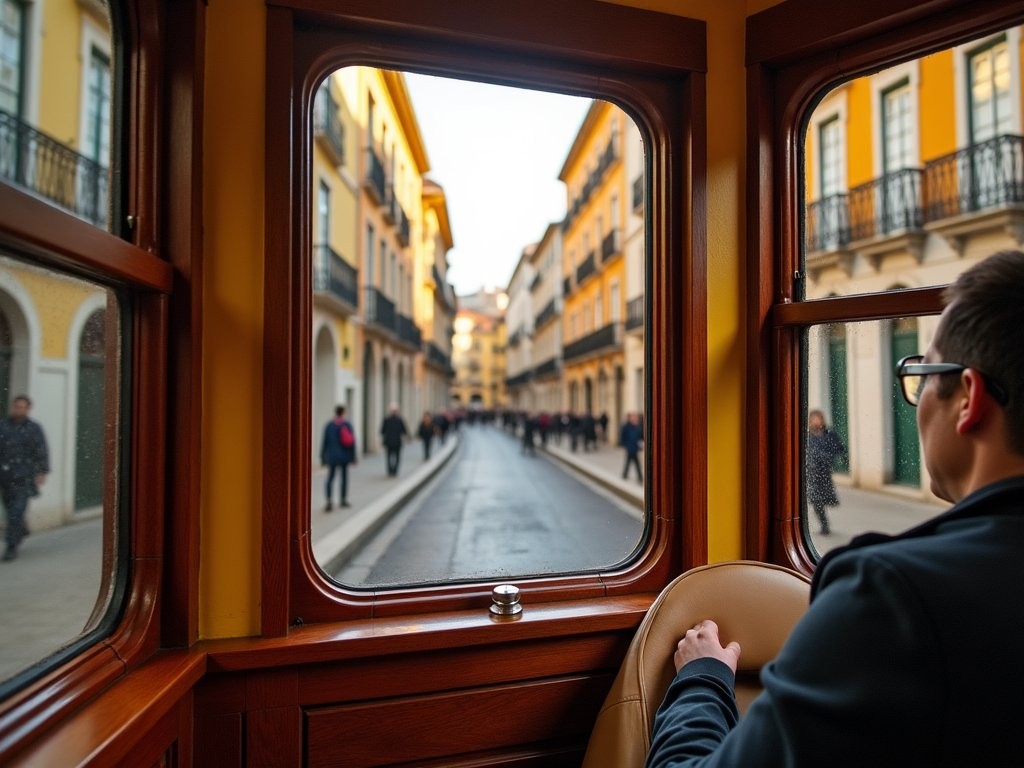
💡 Pro Tips
- Purchase a Viva Viagem card and load it with a 24-hour pass (€6.60) for unlimited public transportation
- Ride Tram 28 early in the morning (before 9 AM) or later in the evening (after 7 PM) to avoid crowds
- Access the Santa Justa Elevator from the upper entrance at Largo do Carmo to use it as regular public transportation
Underground Lisbon: Hidden Gems and Local Secrets
Beyond the postcard attractions lies a Lisbon that most tourists never discover—a parallel universe of underground spaces, hidden workshops, and authentic experiences that won't strain your budget.
Let's start beneath the surface—literally. Few visitors realize that Lisbon hides an ancient Roman gallery system under downtown streets. While the official tours run only a few times yearly and sell out months in advance, I befriended a local archaeology student who tipped me off about the Roman Galleries Open Day (usually in September) when access is free. Descending into these 2,000-year-old tunnels was like time travel—the cool, damp air carrying whispers of ancient Lisbon.
Speaking of underground spaces, don't miss Hospital de Bonecas (Doll Hospital), a 190-year-old workshop where artisans still restore antique dolls using traditional techniques. Hidden on the second floor of a nondescript building in Praça da Figueira, this living museum charges just €2 for entry. I spent an enchanted hour watching an elderly craftsman meticulously repainting the porcelain face of a 19th-century doll with the same techniques used for generations.
My obsession with traditional crafts led me to Bairro das Artes in Mouraria, where a collective of young artisans is reviving traditional Portuguese crafts in contemporary ways. Their open workshops allow visitors to watch ceramicists, weavers, and leather workers practice their crafts for free. I was particularly drawn to a young woman creating azulejos (traditional tiles) using centuries-old techniques but with modern designs. When I expressed interest in her process, she spent nearly an hour demonstrating each step and even let me try my hand at painting a simple tile.
For vintage enthusiasts, skip the overpriced shops in Bairro Alto and head to Feira da Ladra, Lisbon's oldest flea market (Tuesdays and Saturdays in Campo de Santa Clara). Arrive early (before 9 AM) to find the best treasures. I unearthed a beautiful hand-embroidered vintage tablecloth for €5 that would have cost €50+ in tourist shops. The elderly seller beamed when I recognized the traditional Madeira embroidery technique, and threw in a small embroidered handkerchief as a gift.
One rainy afternoon, seeking shelter, I stumbled upon Livraria Ler Devagar in LX Factory—a magical bookstore built inside an old printing factory with books stacked to the ceiling and a bicycle suspended midair. While the area has become somewhat discovered, most tourists stick to the main street, missing the hidden artist workshops in the back buildings where you can watch printmakers and jewelry designers at work.
My most treasured discovery came through a conversation with my hostel's night manager, who mentioned his cousin ran illegal fado vadio sessions in his Mouraria apartment. Unlike commercial fado shows, these underground gatherings are where amateurs and professionals alike share Portugal's soulful music in its purest form. With a bottle of €3 wine as my contribution, I spent an unforgettable evening squeezed into a tiny living room with 15 locals, experiencing the raw emotional power of fado in its natural habitat.
For those seeking physical mementos of their journey, I recommend bringing a travel sketchbook to document these hidden corners. My own is filled with sketches of artisans' hands, architectural details from secret viewpoints, and notes from conversations with locals who shared their city's secrets. These personal records have become far more valuable to me than any souvenir I could have purchased.
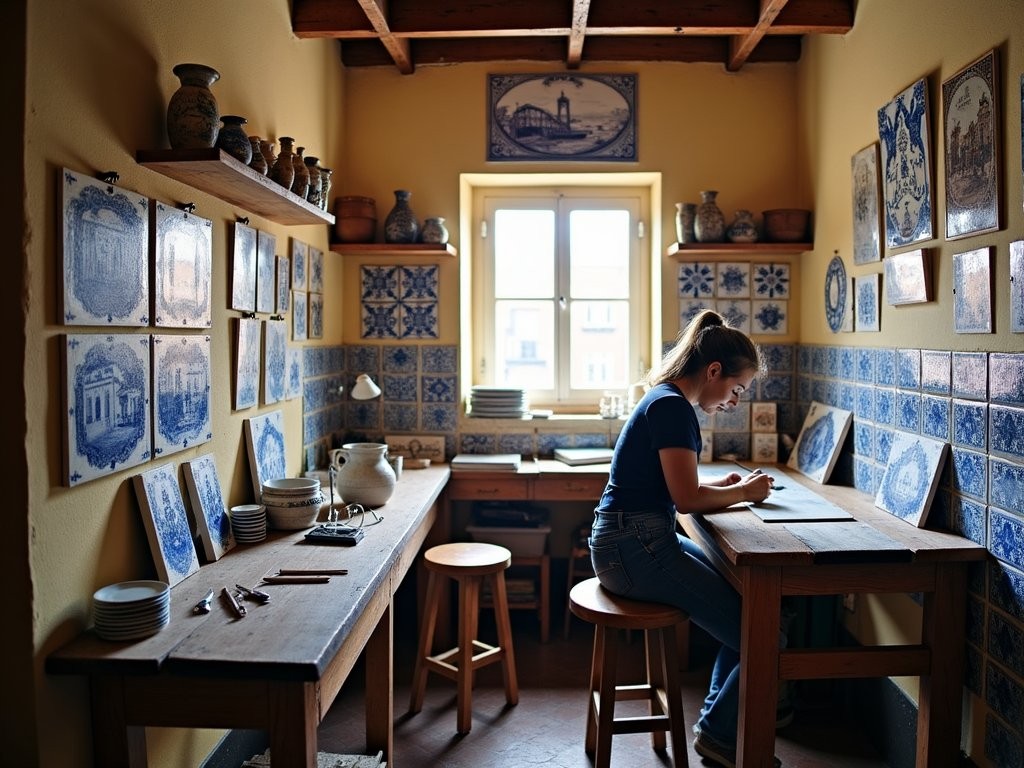
💡 Pro Tips
- Visit Feira da Ladra flea market early on Tuesday or Saturday mornings for the best vintage finds
- Ask local café or restaurant staff (not hotel concierges) for recommendations on hidden spots
- Look for 'Portas Abertas' (Open Doors) signs, which indicate artisan workshops that welcome visitors
Day Trips That Won't Break the Bank
While Lisbon itself offers endless exploration, some of Portugal's most breathtaking experiences lie just beyond the city limits—and they don't require expensive tours to access.
Sintra, with its fairytale palaces and misty forests, tops most visitors' day-trip lists, but entrance fees to multiple palaces can quickly drain your budget. My strategy: select just one palace to enter fully (I chose Quinta da Regaleira for its mystical gardens and initiation well, €10 entrance) and enjoy the others from the outside. The exteriors of Pena Palace and Moorish Castle are actually their most photogenic aspects, visible from numerous free viewpoints throughout the town and surrounding hills.
To reach Sintra, take the direct train from Rossio Station (€2.25 each way). Avoid the expensive tuk-tuks at the station and instead use the circular 434 tourist bus (€5 for a hop-on-hop-off day pass) to reach the hillside attractions, or embrace the walking paths between sites. I discovered a lesser-known hiking trail from the town center to Pena Palace that wound through dense forest, passing ancient shrines and offering glimpses of the palaces through the trees—a magical experience completely free of charge.
For a beach escape, Cascais is accessible via a scenic 40-minute train ride along the coastline (€2.25 each way). While the main beaches near the train station get crowded, I walked about 20 minutes west to Praia da Cresmina, where dramatic cliffs frame a less-visited stretch of sand. Pack a picnic lunch from a Lisbon supermarket to avoid the overpriced beachfront restaurants.
My favorite budget day trip discovery was Setúbal, reached by ferry from Cais do Sodré (€4.40 round trip). This authentic fishing town offers incredible seafood at non-tourist prices—I enjoyed a feast of freshly caught mackerel, potatoes, salad, and wine at Restaurante O Zé for just €12. From Setúbal, local bus #723 (€4.30 round trip) takes you to Parque Natural da Arrábida, where hiking trails lead to secluded beaches nestled between dramatic limestone cliffs. I spent a blissful afternoon at Praia de Galapinhos without seeing another foreign tourist.
For history buffs, Évora is accessible by bus for about €12 each way. While slightly pricier to reach, this UNESCO World Heritage city offers extraordinary value once you arrive. Many of its Roman and medieval treasures can be appreciated for free, including the eerie Capela dos Ossos (Chapel of Bones) if you visit during worship hours rather than museum hours.
The most budget-friendly day trip I discovered was to Almada, just across the Tagus River. The ferry costs less than €2 round trip and offers spectacular views of Lisbon from the water. From Cacilhas terminal, a 20-minute walk leads to the Cristo Rei statue (Portugal's answer to Rio's Christ the Redeemer) with panoramic views across the river to Lisbon. Along the way, don't miss the converted warehouse district where abandoned industrial spaces now house artist studios and affordable seafood restaurants.
For any day trip, I recommend bringing your daypack packed with water, snacks, and a light rain jacket (Lisbon's sunny reputation doesn't always hold true in surrounding microclimates). Having these essentials saved me from paying inflated prices in tourist areas.
The key to budget day-tripping is timing—visiting popular destinations like Sintra on weekdays rather than weekends can mean the difference between peaceful exploration and fighting through crowds, not to mention saving on transportation costs with weekday passes.

💡 Pro Tips
- Visit Sintra on weekdays and arrive early (before 9 AM) to avoid the worst crowds
- Pack a picnic lunch for day trips to avoid expensive tourist restaurants
- Choose one paid attraction per day trip and find free alternatives to enjoy the rest of your time
Crafting Your Budget-Friendly Lisbon Itinerary
After a week of exploring Lisbon on a shoestring, I've crafted the perfect day-by-day itinerary that balances must-see attractions with hidden gems while keeping your daily spending under that magical €45 ($50) threshold.
Day 1: Downtown & Waterfront Orientation Budget Breakdown: Accommodation €18, Food €15, Transportation €6.60, Activities €0 = €39.60
Start your day with a €1.20 coffee and pastel de nata (€1) at a local pastelaria before joining a free walking tour at 10 AM from Praça do Comércio. These tours provide excellent orientation and context—just tip your guide €5-10. Afterward, explore the elegant Baixa district's grid-like streets before taking the Elevador de Santa Justa up to Carmo Square (covered by your €6.60 day transportation pass). For lunch, seek out a €8-10 menu do dia in Chiado.
In the afternoon, wander down to the waterfront and stroll along the river to Cais do Sodré. If you're visiting between Tuesday and Saturday, explore the Time Out Market (free entry) to sample Portuguese cuisine (though be selective about purchases). End your day watching the sunset from the free Miradouro de Santa Catarina with a €1.50 beer from a nearby mini-market.
Day 2: Alfama & Castle District Budget Breakdown: Accommodation €18, Food €16, Transportation €6.60, Activities €5 = €45.60
Rise early to explore Alfama before the crowds. This medieval neighborhood is best experienced by deliberately getting lost in its labyrinthine streets. Climb to Miradouro das Portas do Sol for breathtaking views, then visit São Vicente de Fora Church (free) with its stunning tilework. For lunch, find a tasca serving grilled sardines for around €7.
In the afternoon, choose between entering São Jorge Castle (€10) or discovering the free archaeological site beneath the castle walls. I opted for the latter, combined with a visit to Lisbon Cathedral (free), saving €10 while still experiencing the area's history. As evening approaches, find a spot at Tasca do Jaime in Graça where locals often break into spontaneous fado performances—just buy a €2 glass of wine and soak in the authentic atmosphere.
Day 3: Belém Day Budget Breakdown: Accommodation €18, Food €15, Transportation €6.60, Activities €6 = €45.60
Take bus #728 to Belém early to beat tour groups. Start at Pastéis de Belém for their famous custard tarts (€1.20 each) but limit yourself to one—they're addictive! Visit the free gardens of Jerónimos Monastery before deciding whether to pay the €10 entrance fee. My recommendation: instead visit the less-known Museu Nacional de Arqueologia (€5) housed in one wing, which gives you access to part of the monastery structure plus fascinating artifacts.
Stroll along the waterfront to photograph the Belém Tower (exterior only) and Discoveries Monument before finding a local spot for lunch away from the tourist strip—I discovered Pão Pão Queijo Queijo offering hearty sandwiches for €4.
Day 4: Sintra Day Trip Budget Breakdown: Accommodation €18, Food €12, Transportation €14.50, Activities €10 = €54.50
Yes, this day slightly exceeds our €50 budget, but it's worth the splurge. Take the early train to Sintra (€2.25 each way), then bus #434 (€5 day pass) to access the hillside attractions. Choose ONE palace to enter—I recommend Quinta da Regaleira (€10) for its mystical gardens, initiation well, and tunnels. Pack a picnic lunch to enjoy in the extensive public gardens.
Spend the afternoon hiking the free forest trails connecting the palaces, enjoying exterior views of Pena Palace and the Moorish Castle without paying entrance fees. Return to Lisbon for a budget dinner at your accommodation or a local supermarket picnic.
Day 5: Local Neighborhoods & Markets Budget Breakdown: Accommodation €18, Food €15, Transportation €6.60, Activities €0 = €39.60
Start at Feira da Ladra flea market (Tuesdays and Saturdays) to browse for unique souvenirs and vintage treasures. Then explore the Mouraria neighborhood, Lisbon's most multicultural district and birthplace of fado. Look for small workshops where artisans practice traditional crafts—many welcome visitors for free demonstrations.
For lunch, follow locals to Zé dos Cornos for hearty Portuguese classics around €8. Spend your afternoon exploring the LX Factory complex in Alcântara—a revitalized industrial area with free art exhibitions, quirky shops, and the magnificent Ler Devagar bookstore. End your day at Miradouro da Senhora do Monte for Lisbon's most spectacular sunset panorama without spending a cent.
With careful planning and a willingness to explore beyond the tourist bubble, you'll experience a richer, more authentic Lisbon while keeping your daily budget well under €50. The memories you'll create—of fado echoing through ancient alleyways, conversations with local artisans, and sunlight glinting off the Tagus River—are priceless regardless of how little you spend.

💡 Pro Tips
- Plan museum visits around free entry days and times
- Alternate between budget days and slight splurge days to balance your overall spending
- Schedule expensive activities early in your trip in case weather forces rescheduling
Final Thoughts
As my final evening in Lisbon found me perched on the worn stone wall of Miradouro da Graça, watching the setting sun transform the city's terracotta rooftops into a sea of molten gold, I tallied my expenses. Over seven days, I'd averaged just €43 per day—comfortably under our €45 ($50) target. But the richness of my experience defied this modest number.
What I discovered in Lisbon wasn't just how to stretch euros but how a city reveals its truest self to those willing to step away from the prescribed tourist path. The Portugal I'll remember isn't found in the pages of guidebooks but in the weathered hands of the weaver who showed me her loom, the melancholic voice of the amateur fadista singing in a cramped living room, and the knowing smile of the elderly woman who directed me to her neighbor's unmarked restaurant serving the best bacalhau in the city.
Lisbon taught me that authentic travel has little correlation with spending. So pack your curiosity, wear comfortable shoes, and bring a willingness to get lost in those hilltop labyrinths. Lisbon is waiting to reveal its secrets—and it doesn't charge admission for its most beautiful experiences.
✨ Key Takeaways
- Lisbon can be experienced authentically for under €45 ($50) per day with strategic planning
- The most memorable experiences often cost nothing—viewpoints, wandering historic neighborhoods, and connecting with locals
- Eating where locals eat not only saves money but provides a more authentic cultural experience
📋 Practical Information
Best Time to Visit
Spring (April-May) or Fall (September-October) for mild weather and fewer crowds
Budget Estimate
€40-50 ($45-55) per day including accommodation, food, transportation, and activities
Recommended Duration
5-7 days
Difficulty Level
Easy


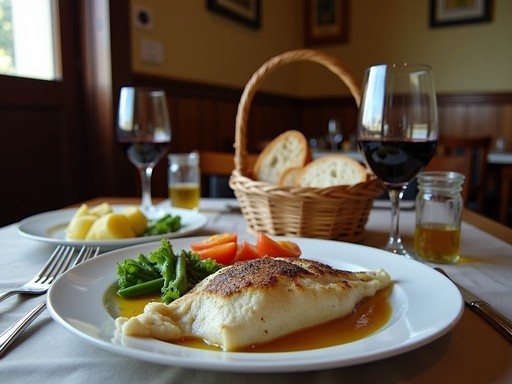

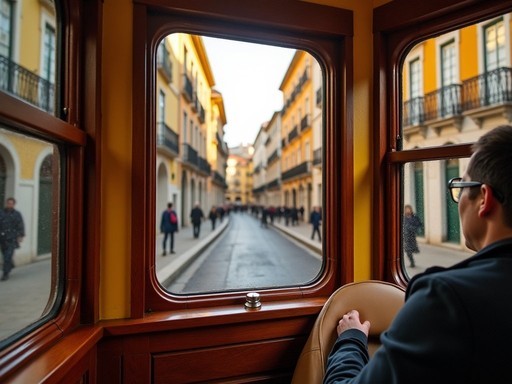




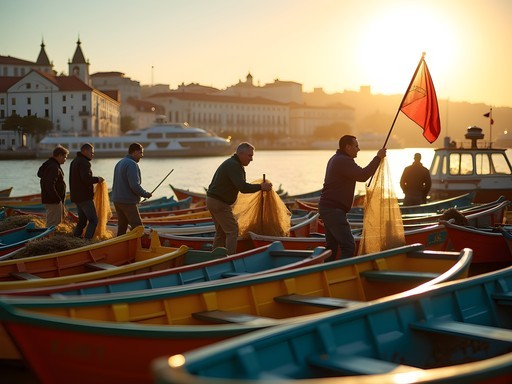
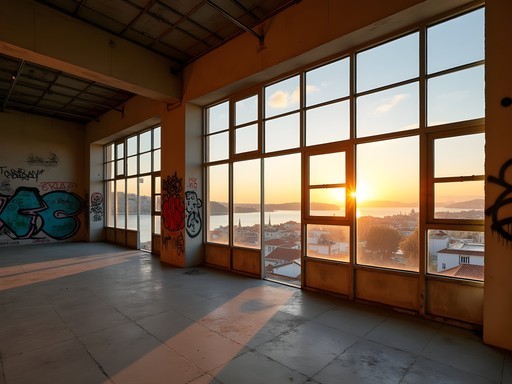
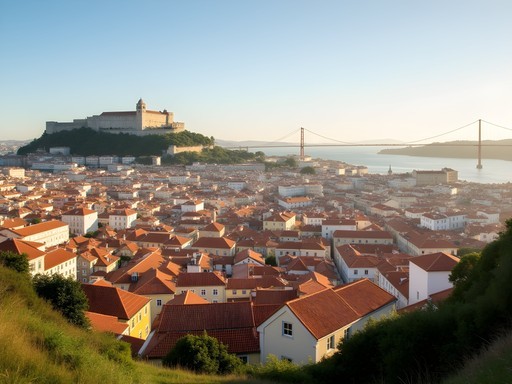
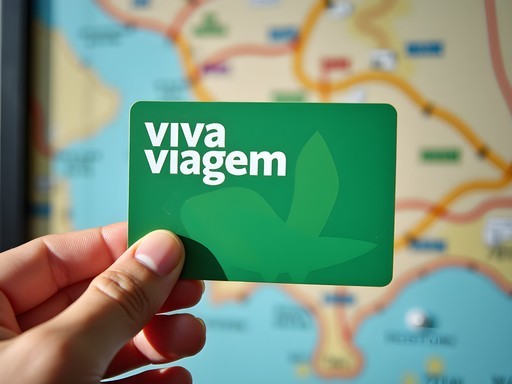

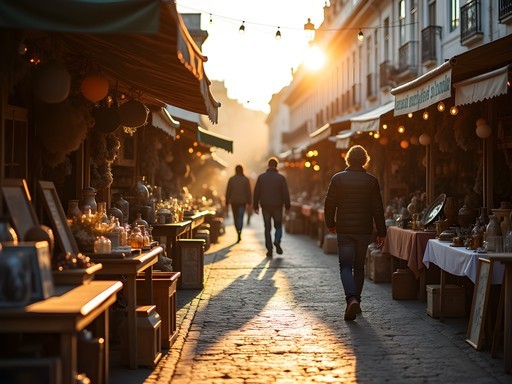
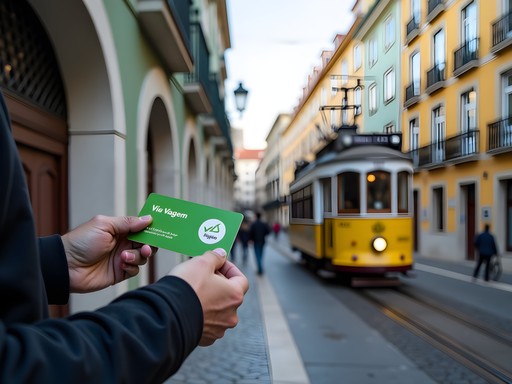
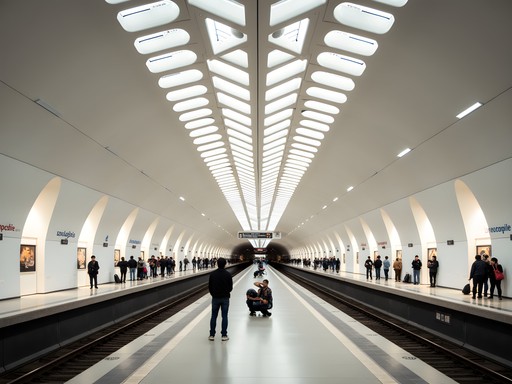
Comments
Hunter Thompson
Brilliant write-up Jeffrey! Your budget breakdown is spot on. I backpacked through Lisbon last summer and would add a few extra tips: 1) The 'Bica' coffee for €0.70 at any local café is the best way to start your day on a budget. 2) For accommodation, I found a great hostel in Bairro Alto for €18/night with breakfast included (Home Lisbon Hostel). 3) The LX Factory on Sundays has amazing vibes with local artists and free performances. 4) Skip the expensive Fado shows and just wander Alfama in the evening - you'll hear authentic Fado drifting from the local tascas for the price of a €2 glass of wine. Lisbon is definitely one of the best value European capitals if you know where to look!
dreamone
Love this post! Those sunset views from Miradouro da Graça look amazing! Do you think 3 days is enough to see the main sights while still keeping it relaxed?
Hunter Thompson
3 days is decent but I'd say 4-5 is ideal. Don't miss Sintra if you can squeeze in a day trip! I used my pocket guide to plan efficiently and it was perfect for a short trip.
cityninja
Just got back from Lisbon last week and can confirm most of these tips are spot on. I'd add that the TimeOut Market is worth a visit but definitely not budget-friendly. Instead, we found this tiny place called 'Taberna da Rua das Flores' where we had amazing petiscos (Portuguese tapas) for half the price of tourist spots. Also, the 28 tram is iconic but always packed with tourists - we ended up walking most places and discovering so many hidden gems along the way. Those hills are no joke though!
dreamone
Did you feel safe walking around? Planning a solo trip and a bit nervous about those hilly areas at night.
cityninja
Absolutely felt safe! Even at night in Alfama and Bairro Alto. Just use normal city precautions. The hills are well-lit and always had people around, especially on weekends.
islandtime
Perfect timing! Heading to Lisbon next month and definitely need to keep it budget-friendly.
Hunter Thompson
You're gonna love it! The Viva Viagem card Jeffrey mentioned saved me tons on transport. Load it with €15 and you're sorted for days!
islandtime
Thanks for the tip! Definitely getting one of those cards.
bluefan
Just got back from Lisbon and used this guide religiously - thank you! We stayed at a small guesthouse in Graça for €30/night with an amazing view. The best money-saving tip I'd add: get a takeaway €1 coffee and €1 pastéis de nata for breakfast instead of sitting at cafes. We saved at least €5 each morning this way. Also found this amazing tiny restaurant called Zé dos Cornos where we had huge portions of bacalhau and wine for under €10. It's completely no-frills but that's where all the locals eat lunch. The free Calouste Gulbenkian museum gardens were perfect for picnics too!
coffeehero
Zé dos Cornos sounds amazing! Adding it to my list for when I visit.
greendiver
We did the public transportation in Lisbon and it was super easy! The reloadable Viva Viagem card saved us tons compared to single tickets. Just avoid taxis from the airport - complete ripoff!
Kimberly Murphy
Jeffrey, this post is spot on! I just got back from Lisbon and managed to stick to €45/day by following similar strategies. One money-saving gem I discovered: LX Factory on Sundays has an amazing free market with local artists and sometimes live music. For accommodation, I used Hostelworld to find Yes! Lisbon Hostel which was only €16/night in the off-season with breakfast included. Also worth mentioning that many museums are FREE on the first Sunday of each month. I timed my visit around this and saw Jerónimos Monastery without paying the usual €10 entry. The Time Out Market is gorgeous but definitely a budget-buster - the tiny tascas in Mouraria neighborhood were half the price with more authentic food!
greendiver
Those first Sunday free museum entries saved me so much money when I visited! Great tip.
adventuremaster
Heading to Lisbon next month - any recommendations for cheap eats near Bairro Alto? That area seems touristy but we're staying there.
Kimberly Murphy
Try Taberna da Rua das Flores - it's small and you might wait, but amazing petiscos (Portuguese tapas) at great prices. Also, any place with 'tasca' in the name is usually authentic and affordable!
adventuremaster
Thanks so much! Adding it to my list right now.
coffeehero
Those sunset photos from Miradouro da Graça are gorgeous! Added to my bucket list.
Hunter Thompson
Brilliant write-up, Jeffrey! I was in Lisbon last summer and can confirm these budget hacks work brilliantly. The Alfama district hostels are absolute gold - I stayed at Home Hostel for €18/night and the included family dinner was worth the price alone! One tip I'd add: the 24-hour public transport pass (€6.60) is even better value than single tickets if you're doing lots of sightseeing. Also, don't miss the free walking tours that start at Praça do Comércio - just tip what you can afford at the end. Lisbon might be getting more popular but it's still one of Europe's best value capitals!
bluefan
Thanks for the hostel recommendation! Was looking at places to stay for my trip in December.
Hunter Thompson
@bluefan Book early! December has Christmas markets and it gets busy despite being off-season. Enjoy the pastéis de nata - they taste even better in winter with a hot coffee!
Venture X
Premium card with 2X miles, $300 travel credit, Priority Pass